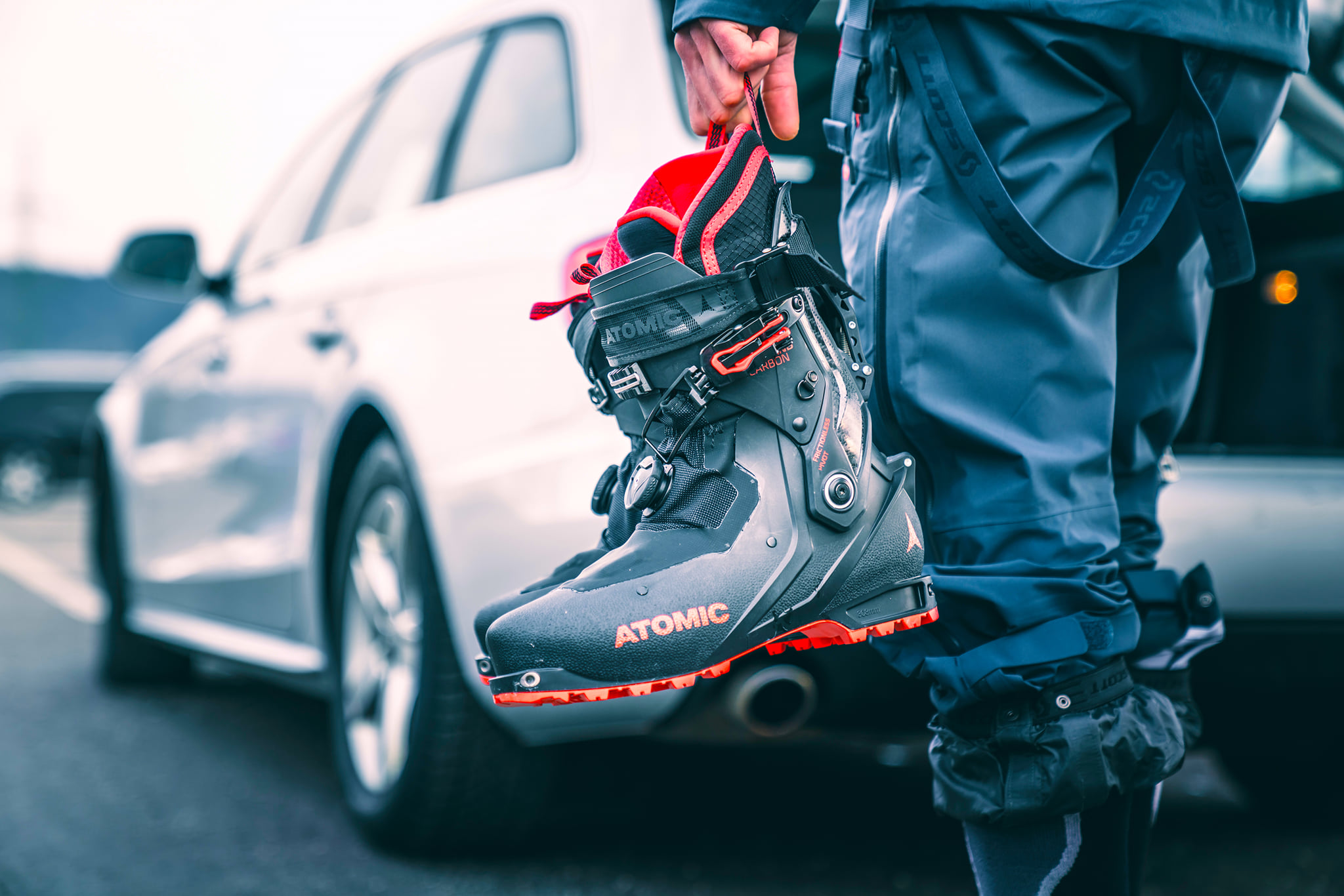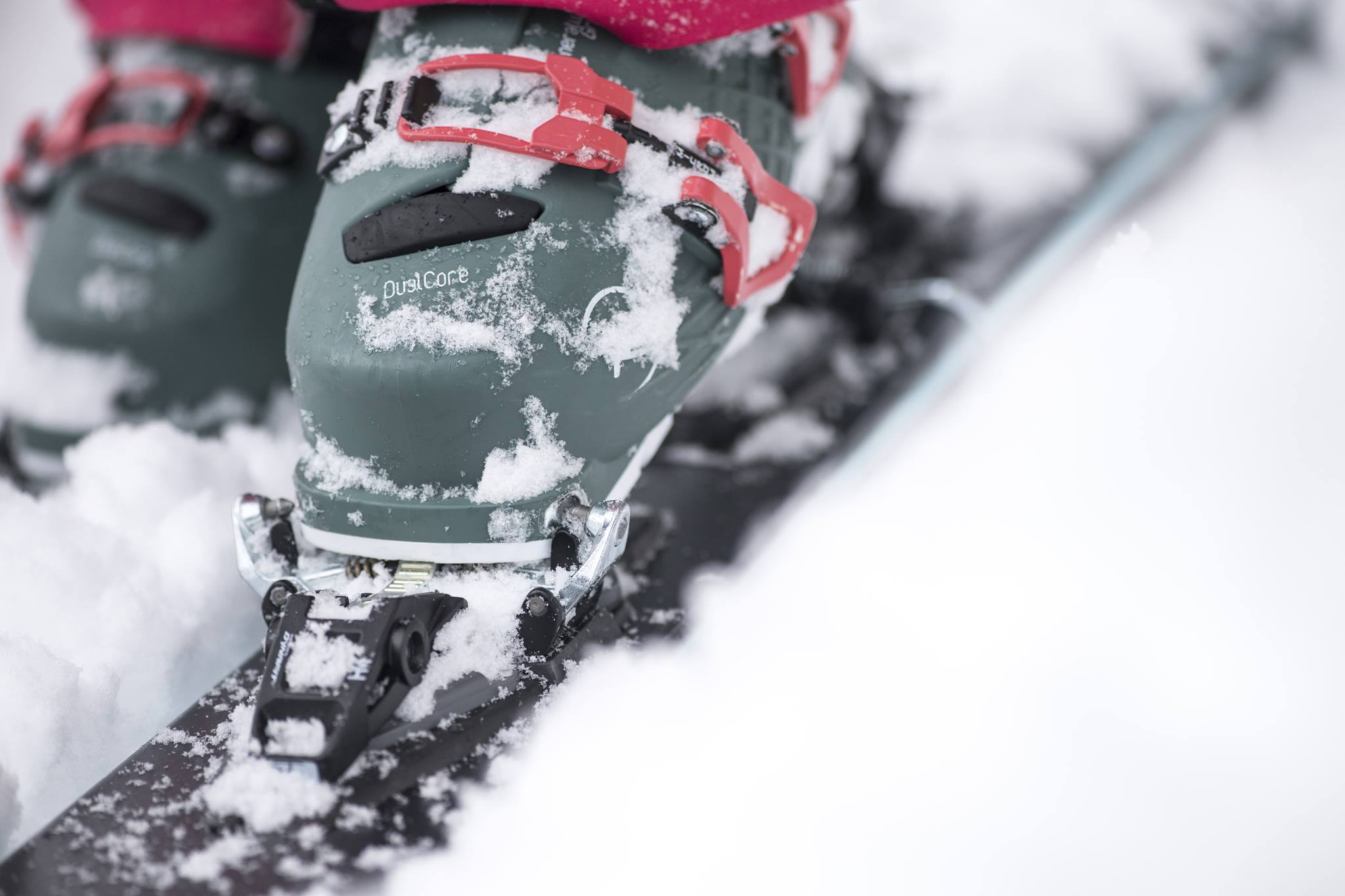You’re probably buckling your ski boots wrong. But you’re not alone.
In a past life as a ski boot fitter, it felt as if the standard operating procedure for a boot shopper was to jam their foot into the new shell, haphazardly buckle it, and then complain that it hurt. They are the fortunate ones: They could try a larger boot right there, realize that that doesn’t feel right either, and then ask for help.
But for the countless skiers who head onto the slopes with painful feet and simply accept that some pain is the nature of ski boots, they would probably enjoy their day a whole lot more if they knew better how to put their boots on correctly. Pain and discomfort in your boots isn’t a given, if you know a handful of tricks, understand the right way to buckle-in, and are willing to ask for help.

1. Only one sock goes in the boot.
Before you even think about sliding your foot into a ski boot, make sure you are wearing the right sock. A high quality ski-oriented sock, such as the Smartwool PhD Ski socks may seem expensive, but they are padded where necessary, and seamless in problem areas like the toes. Forget the two sock system as well: Only one quality sock is needed for proper wicking. Two socks aren’t actually warmer, either. Wearing two pairs can constrict blood flow, making your feet colder. In addition to the sock, make sure your pants or thermals do not go down inside the boot, which would cause additional pressure points in the cuff of the boot on your leg. Only socks go in the boot.
2. Keep your boots warm before putting them on.
Rooftop cargo boxes are great for skis, but they are no place for a ski boot on the way to the resort. Also avoid packing your boots into your car the night before an early morning drive to the mountain. A cold boot is up to 30 percent stiffer than a warm boot, and a warm boot will be much easier to flex apart in order to fit your foot in. Not to mention, you’ll just be starting your day off cold.
3. Start with everything unbuckled.
It may seem obvious, but I’ve seen countless skiers struggle to get their foot into a ski boot, while having 2 or 3 latches still buckled lower down on the boot. Do yourself a favor, unbuckle and fully unlatch every single buckle before trying to put the boot on.

4. Put your boot on, the right way.
You are wearing the right socks, your boots aren’t frozen, and are completely unbuckled. It’s now time to put them on!
From a seated position, hold the boot cuff with one hand and grab the tongue with the other hand—often there are grab handles in both of these places. Pull the tongue forward and to the side as much as possible, to open up the center of the boot, this will let your foot slide in very easily. If you need to fight your foot inside the boot, you’re not pulling it open wide enough, or the boot is too cold to get open.
Next, fit the tongue back into the liner without misaligning it. This can be a bit tricky, but a misaligned tongue can cause a painful pressure point when bucked. Make sure the tongue is seated against the inside of your ankle and shin cleanly and that your sock doesn’t have any wrinkles. With the tongue aligned, lift up your leg and give the heel of the boot a whack on the ground in order to set your foot fully into the heel of the boot.
Time to buckle. Always go with a top down approach, starting with the velcro strap. This will bring all of the buckles closer to each other while also restraining your foot in the correct spot in the boot. After lightly buckling everything, stand up with your foot flat on the ground and bend your knee a few times, flexing the boot. This action continues to align your foot inside the boot through the typical ski motion, and pushes your heel further to the back.
Now, go back through the buckles and tighten as necessary. It’s important to remember that your feet can compress or swell depending on the time of day, so its best to tighten by feel instead of always going back to the same buckle. And don’t be afraid to adjust them throughout the day—tightening them as your feet settle further into the boot, or loosening they as your feet swell.
Feel like you’re somewhere between notches on a buckle? Remember to use the micro-adjustments by twisting the buckle to either shorten or lengthen it slightly for the perfect fit.
As you ski throughout the day, remember to flip the buckles open when you are in the lift line or on the lift. This will help to aid in blood circulation for your feet, keeping you warm.

5. Don’t settle.
Lastly, as a boot fitter, we understand that ski boots are expensive and everyone has uniquely shaped feet. Almost no boot will fit 100 percent perfectly out of the box. Before giving up on a boot that doesn’t feel quite right, try bringing it to a professional boot fitter and seeing if modifications are possible. There are a multitude of fitting techniques that can be applied to help alleviate fit issues with ski boots, including heel lifts and arch supports, fully- or semi-custom insoles like Superfeet, thermofit liners, moving buckles, or stretching the shells.
Aaron Courain
Aaron Courain is a mechanical engineer by trade as well as an aspiring husband, who grew up in northern New Jersey. He is a team member of the New York Adventure Racing Association, which allows him to be “just ok” at multiple sports, instead of really good at one. Climbing and adventure racing has provided a constant challenge and outlet for outdoor pursuits, while living in NJ has forced him to get creative about fitting as much outdoors time as possible into the daily grind.
Related Posts
April 2, 2024
10 Tips for Mountain Biking Etiquette During Mud Season
One rough spring could ruin the…




